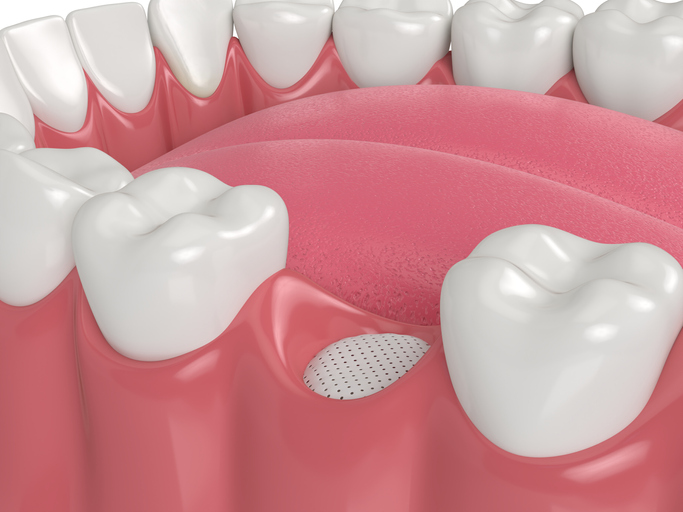
Dental implants, which are a beautiful, durable alternative to traditional dentures, are only as strong as the jaw tissue that they are anchored into. Unfortunately, if your teeth have been missing for a while, your jawbone may have melted away, making it much more difficult to place and stabilize new dental implants. Your teeth are held in place by strong ligaments that connect to your jawbone. As you talk and chew, these ligaments tug against your jawbone, which stimulates the bone tissue and keeps it strong. However, when teeth fall out, the jawbone doesn’t receive this stimulation, and the bone can actually start to resorb. This process occurs fairly rapidly, with most patients losing as much as 25% of jawbone ridge width within the first year, and up to four additional millimeters of width within the next few years.
The purpose of bone grafts for dental implants is to fill in the areas of the jawbone that may have thinned out over time, usually to give dental implants a strong foothold.
Determining When Bone Grafts Are Needed
Aside from deterioration due to tooth loss, bone grafts may also be necessary after sustaining oral or facial injuries, living with diseases that can weaken bone tissue, or suffering from periodontal disease. Before Dr. Scharf talks with you about your candidacy for dental implants and offers an estimated timeline for the procedure, he will carefully inspect your existing jawbone tissue through a visual exam and by taking X-rays of your mouth and jaw. Here are a few things he will check for.
Bone Thickness and Depth
Your future dental implants will need an adequate layer of bone on either side to stay strong and stable. If your bone isn’t thick enough, grafts may be placed on either side to bolster the area. The bone tissue also needs to be deep enough to accommodate an implant without compromising nearby sinus cavities or nerves.
Bone Density
In addition to being thick and deep enough, bone tissue needs to be strong enough to support an implant. If the tissue is compromised due to poor diet or previous disease, a graft may be needed anyway, even if the tissue is the right depth and width.
Individual Anatomy
Every patient is different, which is why Dr. Scharf will take careful measurements of your mouth and neighboring anatomical structures. For example, if you have sinus cavity problems or have endured previous facial surgeries, your dental implant surgical plan might need to be altered to avoid complications. Bone grafts can be placed to keep implants from penetrating sinuses or nearby restorations.
The Bone Grafting Process
Although the process of getting dental bone grafts might seem intimidating, most patients report that it feels just like a traditional dental restoration. There are several types of bone grafts available to patients, with the most popular options being allografts and xenografts. Allografts are made from cadaver bone that has been completely cleaned and sterilized, and xenografts are created from sterilized cow bone tissue. These types of implants are recommended because patients won’t have to worry about a second procedure to harvest their own bone tissue. Dr. Scharf can answer any questions you may have about grafts and which option might be right for you.
During the bone grafting surgery, you will be numbed in the area to receive the graft, and a small incision will be made in the gums to expose your jawbone. The graft will then be stitched into place, and the gum incision will be stitched closed. After the grafts have been placed, the area will be monitored carefully during the healing process. Grafts can take as long as 4-9 months to fully heal and integrate with your existing bone tissue, but after they have healed, they can provide the stability your implants need to stay strong and beautiful for a lifetime. To start the process of preparing for dental implants, contact us to schedule an appointment today!.
